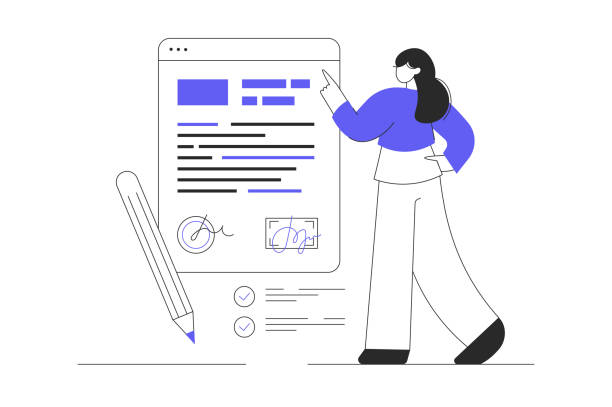The Importance of Custom Website Design in Today’s World

In today’s digital age, a strong and distinctive online presence is vital for every business, from nascent startups to large corporations.
In this context, choosing a pre-built website or opting for custom website design is a crucial decision.
A custom website allows you to precisely shape every part of your online platform according to your unique business needs and strategic goals.
This approach, beyond visual appeal, helps you strengthen your brand identity, create a competitive distinction, and provide an unparalleled user experience for your audience.
Unlike ready-made templates, which often have limitations in flexibility, scalability, and the implementation of complex business logic, a #custom_website_design project allows for the implementation of specific features, integrated systems, and customized workflows.
This means your website can evolve with your business growth, easily accommodating new functionalities without the need for costly and complete rebuilding.
Furthermore, with a fully custom website, you can have greater security assurance, as its code is written specifically for you from the ground up, avoiding the common vulnerabilities and weaknesses of ready-made templates (such as plugin or theme bugs).
This approach is a long-term investment that ultimately leads to increased operational efficiency, significant improvement in SEO, and strengthened customer trust and loyalty.
This comprehensive article delves into various aspects of custom website design, providing the necessary guidance for making optimal decisions and realizing a powerful online platform.
From the initial stages of needs analysis and planning, to technical development details, UI/UX considerations, SEO strategies, and maintenance and support challenges, all important aspects will be examined to ensure you can embark on this journey with a complete understanding.
Is your company’s website as professional and trustworthy as it should be? With specialized corporate website design by Rasawp, create an online presence that reflects your credibility and attracts more customers.
✅ Build a powerful and professional image for your brand
✅ Convert visitors into real customers
⚡ Get free consultation now!
Unparalleled Advantages of Custom Website Design Versus Templates
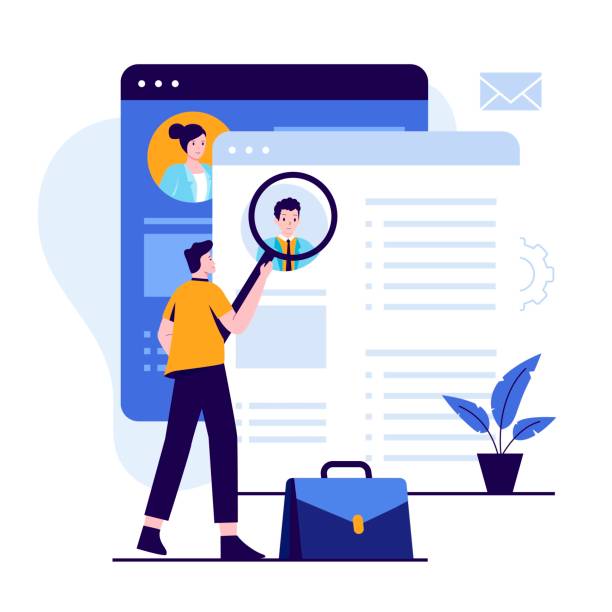
Have you ever wondered why you should spend more on custom website design when ready-made templates are available at a lower cost? The answer lies in the deep and long-term advantages that only a custom website can provide.
One of the most important of these advantages is unlimited flexibility.
Ready-made templates, no matter how beautiful, have design and functionality limitations, and you cannot add any desired feature to them or completely change their structure.
In contrast, a custom website design allows you to personalize every aspect of the site, from appearance and branding to internal functionality, complex custom systems, and your unique business logic, precisely according to your company’s exact needs.
This means no compromise with limitations and reaching your full online potential.
#Flexibility, #High_Performance, #Better_SEO.
Moreover, optimized performance is another striking advantage.
Custom websites typically have more optimized code, leading to much faster loading speeds, greater stability, and a smoother user experience.
This is important not only for visitor satisfaction and reducing bounce rates but also a significant factor in search engine rankings, as Google places great importance on site speed.
Security is another critical factor; ready-made templates, due to widespread use and numerous plugins, are more common targets for cyberattacks, and their maintenance requires continuous and sometimes complex updates, whereas a custom website, with its unique code and special attention to cybersecurity principles from the outset, provides a higher level of security.
Ultimately, complete ownership of the code and future development capabilities ensures that your site can grow with your business, cover future needs, and become a real digital asset for you.
Key Stages in a Successful Custom Website Design Project

A custom website design project involves several important and continuous stages, each playing a vital role in its ultimate success.
Understanding these stages helps the client to better comprehend the process and participate in it with a clearer perspective.
The first stage is comprehensive analysis and planning.
In this section, your business needs are meticulously examined, project objectives (such as increasing sales, improving customer relations, or offering new services) are defined, target audiences are identified, and a comprehensive roadmap for the website’s structure, content, and functionalities is outlined.
This stage also includes competitor analysis, content strategy definition, and project scope and budget determination, which lay solid foundations for subsequent stages.
#Needs_Analysis, #Strategic_Planning, #Roadmap.
The second stage is User Interface (UI) and User Experience (UX) design.
In this phase, preliminary designs, wireframes, and interactive prototypes of the site are created to define the site’s look and feel and how users will interact with it.
The goal is to design a user-friendly, attractive, and effective website.
After the designs are approved and feedback is gathered from real users or their representatives, it’s time for the development and coding stage.
In this stage, the development team uses appropriate programming languages and frameworks to transform the designs into a functional and operational website.
Database implementation, front-end and back-end sections, and integration of various systems (such as payment gateways or CRM) are carried out in this stage.
Finally, the testing and launch stage involves comprehensive functional, security, compatibility with various browsers and devices, and user experience testing.
After resolving any potential issues, the site is publicly launched, and maintenance and support stages begin.
The following table summarizes these stages and their main activities:
| Stage | Brief Description | Key Activities |
|---|---|---|
| Analysis and Planning | Deep understanding of business needs and goals and drawing a roadmap | Reviewing goals, competitor analysis, audience definition, content strategy formulation, budget and timeline determination |
| UI/UX Design | Creating a user-friendly and attractive visual and interactive experience | User research, wireframing, prototyping, graphic design, testability and user feedback |
| Development and Coding | Converting the design into an operational website and implementing functionalities | Front-end and back-end coding, database implementation, API and external system integration |
| Testing and Launch | Ensuring quality, security, and public release of the site | Functional testing, security testing, compatibility (cross-browser), bug fixing, final publication and hosting settings |
| Support and Maintenance | Maintaining stability and continuous updates after publication | Monitoring, software updates, technical issue resolution, adding new features, security and backup |
Advanced Technologies in Custom Website Development
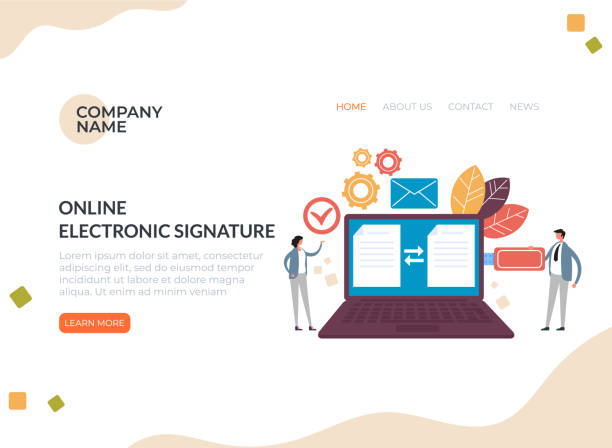
In the process of custom website design, choosing the right technologies plays a significant role in the website’s final performance, security, and scalability.
A professional development team, considering the project’s needs, selects the best back-end technologies and front-end technologies.
In the front-end (what the user sees and interacts with), languages like HTML for structure, CSS for styling, and JavaScript for adding interactivity form the backbone.
JavaScript frameworks and libraries such as React, Angular, and Vue.js enable developers to create complex and interactive user interfaces with high speed and efficiency.
These frameworks improve state management, componentization capabilities, and code reusability, which are especially effective in large and complex projects.
#Web_Technology, #Front_End, #Back_End.
In the back-end (server logic, data processing, and database), there are numerous options, each with its own advantages.
Python with Django and Flask frameworks is ideal for powerful and scalable projects due to its high readability, rich ecosystem of libraries (especially for data analysis and artificial intelligence), and rapid development capability.
PHP with the Laravel framework is still one of the most popular choices for business websites, content management systems, and interactive platforms, thanks to its large user community and abundant resources.
Node.js enables the use of JavaScript on the server side and is highly suitable for real-time applications such as chat, online games, and collaboration platforms.
Alongside these, languages like Ruby on Rails and Go are also used in specific projects.
For databases, SQL options like MySQL and PostgreSQL (for structured data) and NoSQL options like MongoDB and Firebase (for unstructured data and horizontal scalability) are chosen depending on the data type and scalability needs.
The correct selection of these technologies, in addition to impacting performance and security, also contributes to the future development capabilities and easier maintenance of the website.
Does your current corporate website present a worthy image of your brand and attract new customers?
If not, with Rasawp’s professional corporate website design services, turn this challenge into an opportunity.
✅ Significantly improves your brand’s credibility and image.
✅ Paves the way for attracting targeted leads and new customers.
⚡ For free and expert consultation, contact Rasawp now!
The Role of User Interface and User Experience in Custom Website Success

In any custom website design project, attention to User Interface (UI) and User Experience (UX) is not just an advantage, but a necessity.
UI refers to the visual appearance of the website; including colors, fonts, element layout, images, and graphics.
The goal of good UI is to create an attractive, visually pleasing, and brand-consistent environment that conveys a sense of professionalism and trust.
On the other hand, UX relates to the overall feeling and experience of the user when interacting with your website.
Is the website easy to navigate? Is information found quickly and intuitively? Is the purchasing or registration process smooth and uncomplicated? These two aspects complement each other and are both vital for the success of a custom website.
#User_Interface, #User_Experience, #User_Friendly.
A strong UX ensures that users can easily achieve their goals on the site and enjoy their presence on it.
This includes optimizing loading speed, full compatibility with various devices (responsive design and mobile-first), accessibility for individuals with different abilities (in accordance with WCAG standards), and designing intuitive user flows.
Professional design teams in the process of custom site creation first identify user personas’ needs, expectations, and pain points through research and analysis.
Then, using wireframes and interactive prototypes, they repeatedly test and finalize the site’s structure and flow before final coding.
This iterative and user-centric approach ensures that the final site is not only beautiful but also functionally flawless and responds optimally to user needs and business goals.
Investing in professional UI/UX design directly leads to increased conversion rates, reduced bounce rates, improved customer satisfaction, and ultimately, their loyalty to your brand.
Search Engine Optimization and its Importance in Custom Websites
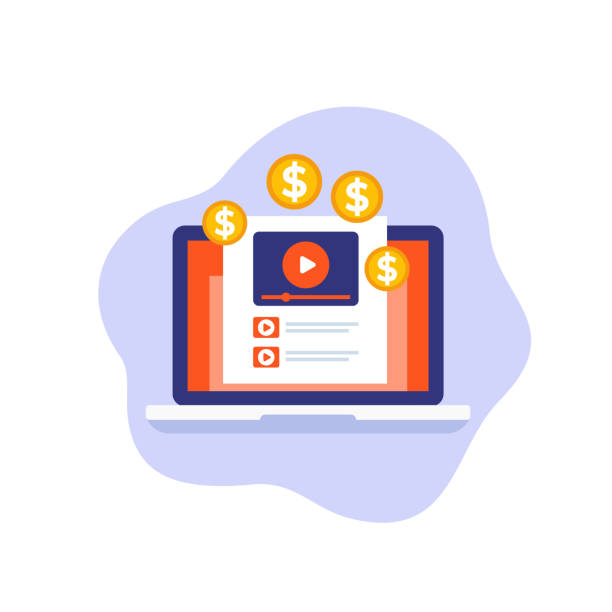
One of the biggest advantages of custom website design is its full optimization capability for Search Engines (SEO).
Unlike ready-made templates that may have extra code, heavy plugins, or unoptimized structures, a custom website is built from scratch with SEO principles in mind.
This means developers can design a clean, lightweight, fast code structure that adheres to search engine standards.
This helps search engines crawl your website more easily, accurately index its content, and ultimately give it a better ranking.
The result of this process is attracting more and higher-quality organic traffic through Google and other search engine searches.
#Technical_SEO, #SEO_Content, #Keywords.
Key SEO elements in custom web development include comprehensive page loading speed optimization (Core Web Vitals), responsiveness (responsive design) for various devices, SEO-friendly URL structure, correct use of title tags and meta descriptions on each page, and hierarchical use of heading tags (H1, H2, H3) for content organization.
Furthermore, the ability to implement structured data (Schema Markup) precisely and custom for various content types (such as products, events, articles, recipes) provides search engines with more semantic information about your content and can help display richer results (Rich Snippets) in SERP, significantly increasing click-through rates.
In addition to technical SEO, producing high-quality, valuable, and relevant content aligned with target keywords that address audience needs, along with internal and external link-building strategies, are inseparable parts of a successful SEO campaign for a custom site.
In summary, a custom website provides a more suitable platform for comprehensive and unrestricted implementation of SEO strategies and achieving top rankings in search results, which in turn means increased visibility, enhanced credibility, and sustainable growth for your business.
Support, Maintenance, and Continuous Updates for Custom Websites
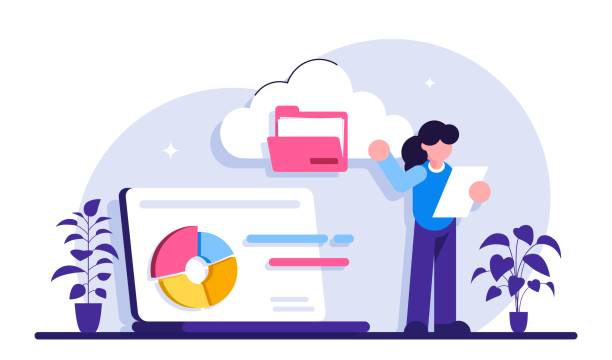
After the successful launch of a custom website design project, the work doesn’t end; instead, a new phase of care and maintenance begins, which is vital for long-term success.
Continuous maintenance and support are essential to ensure the website’s proper functioning, security, and up-to-dateness in a constantly evolving digital world.
This includes security updates, bug fixes, performance improvements, and adding new features based on the evolving needs of the business and technology.
Without regular maintenance, your website may face serious security issues, its speed could drastically decrease, or it might encounter errors when displayed on new browsers and devices, all of which harm your user experience and brand credibility.
#Site_Maintenance, #Technical_Support, #Web_Security.
The technical support team is responsible for 24/7 website monitoring, regular and automatic backups of data and databases, and ensuring compatibility with the latest versions of server software, programming languages, and libraries used.
These preventive measures significantly help in preventing potential disruptions, reducing downtime, and maintaining the website’s stability and availability.
Additionally, over time, as market and technology needs change, there may be a need to add new functionalities, integrate with other systems (such as CRM, ERP, or marketing automation systems), or implement advanced performance optimizations.
These gradual updates and developments help your site remain competitive and maintain an optimal user experience.
Investing in a robust support and maintenance plan protects your initial investment in site design and development and continuously increases its long-term value.
The following table summarizes the important activities in website maintenance:
| Activity Type | Description | Importance |
|---|---|---|
| Security Updates | Installing patches and security updates to protect against vulnerabilities and new threats | Crucial for data protection, preventing cyberattacks, and maintaining brand reputation |
| Regular Backup | Periodic and automatic backup of all website files and database | Ensures quick and complete data recovery in case of issues, server failures, or cyberattacks |
| Performance Monitoring | 24/7 monitoring of speed, uptime, server resource load, and overall website performance | Identifying and resolving performance issues before they negatively impact user experience and SEO ranking |
| Bug and Error Fixing | Identifying and correcting any technical errors or flaws in the website code, whether minor or major | Maintaining smooth website functionality and preventing negative user experience or loss of customers |
| Adding New Features | Developing and implementing new requested features or improving existing functionalities | Adapting to evolving business needs, innovation, and maintaining market competitiveness |
| Database Optimization | Organizing, cleaning, and optimizing database tables for faster access speed | Increasing data retrieval speed, reducing website response time, and improving overall performance |
| Content Updates | Assisting with regular updates and addition of new content | Keeping the site fresh, improving SEO, and attractiveness for visitors |
Cost Analysis and Return on Investment in Custom Website Design
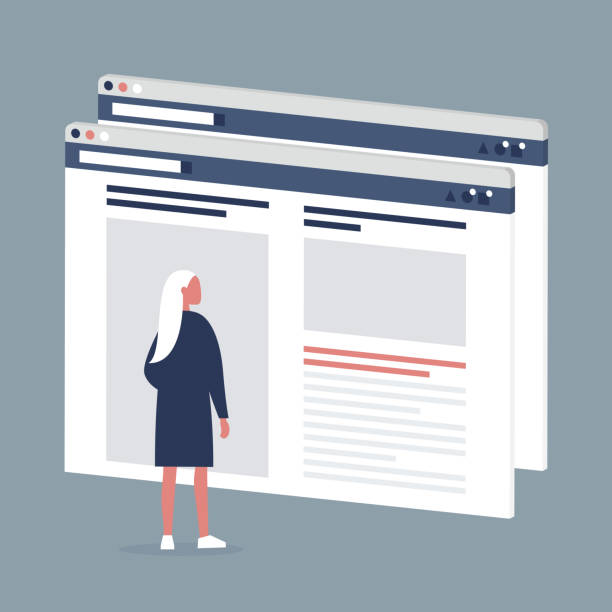
One of the key questions that arises when deciding on custom website design relates to costs and Return on Investment (ROI).
At first glance, the cost of a custom website might seem higher than template-based solutions.
However, it’s crucial to consider this cost as a strategic, long-term investment, not just a temporary expense.
Many factors influence the final price, including the complexity of required functionalities, the number of pages, the level of UI/UX design (is extensive user research needed?), the need for integration with internal business systems (such as ERP or CRM), content volume, and the experience and reputation of the development team.
The more specialized your needs and the more complex the requested features, naturally, more time and expertise are required, leading to a higher cost.
#Website_Design_Cost, #Return_on_Investment, #Long_Term_Value.
However, the return on investment from custom web development can be significant and extend beyond initial costs.
A custom website allows you to:
- Completely align with your brand and business message, creating unparalleled differentiation, which is highly valuable in today’s competitive market.
- Achieve better performance and speed, directly impacting user experience, reducing bounce rates, and improving SEO ranking, all of which lead to increased traffic and conversions.
- Experience higher security and protect your business and customer information from cyberattacks, which can incur hefty costs.
- Have high scalability, meaning that as your business grows, the site can also evolve without requiring a complete rebuild, preventing additional costs and time in the future.
- Gain valuable insights into user behavior and continuously improve your marketing and sales strategies through the ability to perform precise and customized data analysis.
In the long run, these benefits can lead to significant increases in sales, improved operational efficiency, reduced support costs resulting from technical issues (common in ready-made templates), and strengthened brand credibility.
Therefore, from an analytical and comprehensive perspective, investing in a custom site is often not only more beneficial but also more essential for survival and sustainable growth in today’s digital environment than cheaper but more limited solutions.
Are you worried your old company website is scaring away new customers? Rasawp solves this problem with modern and efficient corporate website design.
✅ Increases your brand’s credibility.
✅ Helps attract targeted customers.
⚡ Contact Rasawp now for a free consultation!
Successful Examples of Custom Website Designs

To better understand the value of custom website design, looking at successful examples across various industries can be inspiring and demonstrate how a custom website can create an unparalleled competitive advantage.
Leading companies in fields such as e-commerce, technology, financial services, healthcare, and online education often use fully custom websites to meet their complex and unique needs and provide a distinctive experience to users.
For example, a leading online education platform might require a fully custom Learning Management System (LMS) with advanced quiz functionalities, precise student progress tracking, sophisticated interactive tools, and dedicated internal communications, which are rarely found in generic templates with this level of flexibility and efficiency.
#Successful_Businesses, #Online_Platform, #E_commerce.
In the e-commerce industry, large websites like Amazon or Digikala are prominent examples of large-scale custom web development.
They require powerful search engines with intelligent algorithms, personalized product recommendation systems based on user behavior, complex inventory management for millions of items, and secure and diverse payment gateways, all of which necessitate custom codes and complex architectures.
A service company like an online travel agency might need a fully custom flight and hotel search engine with highly precise filtering capabilities and integration with dozens of external suppliers.
Even smaller businesses can benefit from a custom website; for instance, an online art gallery might require an interactive project gallery with specific filtering capabilities for artworks, augmented reality (AR) features to display artworks in the customer’s home environment, and a visit appointment booking system.
These examples demonstrate how the flexibility and complete control that custom site building provides can allow organizations and businesses, regardless of size, to turn their innovative ideas into reality and offer an unparalleled user experience that differentiates them from competitors and contributes to their sustainable growth.
The Future of Custom Website Design and New Trends
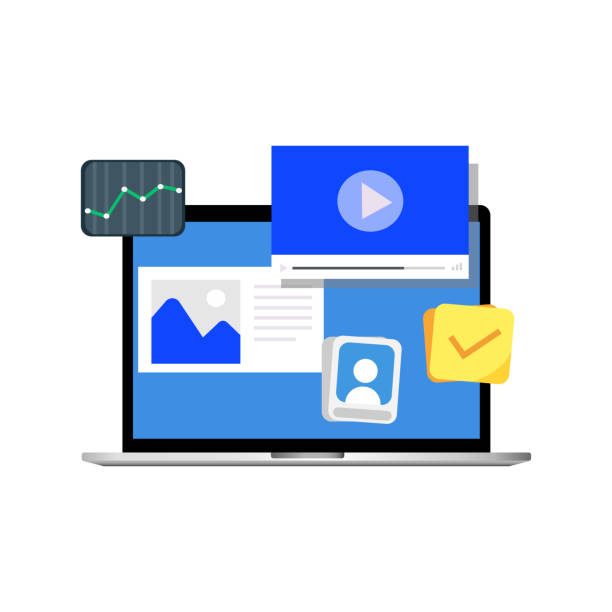
The future of custom website design is rapidly evolving, with new trends emerging daily that are transforming the web landscape.
One of the most important of these trends is the deeper integration of Artificial Intelligence (AI) and Machine Learning (ML) into websites.
These technologies can be used for unprecedented user experience personalization (such as displaying custom content based on past user behavior), providing intelligent product recommendations, launching advanced chatbots for customer support, and in-depth analysis of user behavior to continuously improve site performance.
Virtual Reality (VR) and Augmented Reality (AR) are also gradually making their way into websites, especially in industries like retail (virtual try-on for clothes or cosmetics) and real estate (interactive virtual tours of homes).
#Future_Web_Trends, #AI_in_Web, #Personalized_Experience.
Another trend is the increasing focus on Progressive Web Apps (PWAs), which offer a combination of the best features of web and mobile applications: fast loading speeds, offline capabilities, push notifications, and the ability to install on mobile device home screens.
Cybersecurity will also remain a top priority, with increased emphasis on end-to-end encryption, multi-factor authentication, and stricter adherence to data privacy regulations (such as GDPR in Europe).
Furthermore, the emergence of new architectures like Headless CMS (Content Management Systems that only provide content, with its display handled by a custom front-end) and the concept of Jamstack (JavaScript, API, and Markup) are changing how fast and secure websites are built.
Although No-Code and Low-Code design are growing, for complex custom web development projects that require specific business logic and high scalability, programming expertise and custom design will continue to be essential.
Custom website design and development teams must constantly align themselves with these developments to provide innovative and forward-looking solutions and assist businesses in achieving their goals.
Frequently Asked Questions
| Question | Answer |
|---|---|
| What is custom website design? | The process of designing and implementing a website from scratch based on the unique needs, brand, and goals of a business or individual, without using ready-made templates. |
| What are the main advantages of custom website design? | Includes unique visual identity, optimized and fast performance, infinite customization capabilities, higher security, easy scalability, and better optimization for SEO. |
| Which businesses most need custom website design? | Businesses that require complex or unique functionalities, have a strong brand and want to fully reflect their visual identity, or plan for future growth and development. |
| Is custom website design more expensive than using a template? | Yes, typically the cost of custom website design is higher than using ready-made templates due to the greater time and expertise involved. |
| What stages does a custom website design process usually include? | Usually includes needs analysis, planning and strategy, User Interface and User Experience (UI/UX) design, development (front-end and back-end programming), testing and debugging, and finally launch and support. |
And other advertising services of Rasawp Advertising Agency
Smart Direct Marketing: An effective tool for customer acquisition with the help of attractive UI design.
Smart SEO: A professional solution for increasing sales with a focus on precise audience targeting.
Smart Data Analysis: A combination of creativity and technology for user engagement through marketing automation.
Smart Link Building: An effective tool for campaign management with the help of SEO-driven content strategy.
Smart Advertorial: An effective tool for increasing click-through rates with the help of intelligent data analysis.
And over hundreds of other services in the field of internet advertising, advertising consultation, and organizational solutions
Internet Advertising | Advertising Strategy | Advertorial
Resources
Smart Website Design Guide
Key Tips for Custom Website Design
Effective Web Presence Strategies
Comprehensive Web Design Tutorial
? Ready to revolutionize your business in the digital world? Rasawp Afarin Digital Marketing Agency, specializing in comprehensive services including custom website design, professional SEO, and targeted advertising campaigns, is your guide to success in the online space. With us, your brand will shine at its peak.
📍 Tehran, Mirdamad Street, next to Bank Markazi, Southern Kazeroon Alley, Ramin Alley No. 6

